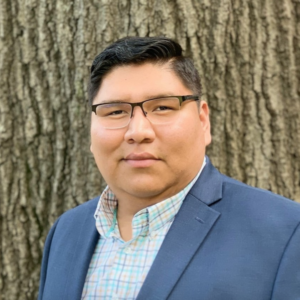Internet will bring badly needed jobs to reservation
PINE RIDGE – The Federal Communications Commission (FCC) notified the Oglala Sioux and 153 other tribes on Oct. 23 that they succeeded in obtaining licenses to provide advanced wireless internet services, creating unprecedented prospects for Indian country.
“We’ll see in the coming years how this is going to change our communities,” said Oglala Sioux Tribe Planning Office Program Manager Ernest Weston Jr. “I’m really excited for this opportunity because we have something very big here and we need to be very deliberate,” Weston told the Native Sun News Today.
On tribal lands, only 65 percent of the population has access to broadband, according to MuralNet, a non-profit company that is providing consultation to tribes on the FCC’s Rural Tribal Priority list.
Half of tribal rural households don’t even have access to a fixed wireless internet provider, which is over twice the rate of their non-tribal counterparts, MuralNet says.
On Feb. 2, the agency began offering tribal governments complementary licensing of the radio airwave communication spectrum’s 2.5 GHz band of mobile and digital signal previously reserved for educational institutions.
On Sept. 15, the FCC notified the Oglala Sioux Tribe and 156 other applicants that they qualified for license consideration after the agency’s Rural Tribal Window closed Sept. 2.
In announcing the granting of the licenses Oct. 23, FCC Chairman Ajit Pai called them “a major step forward in our efforts to close the digital divide on tribal lands.” Pai recognized that “few communities face the digital connectivity challenges faced by rural tribes.”
He said he has “seen first-hand the connectivity difficulties facing Native Nations.” By prioritizing tribal control over access to the Educational Broadband Service range, “We are ensuring that tribes can quickly access spectrum to connect their schools, homes, hospitals, and businesses,” he said.
The agency now is distributing the 2.5 GHz band licenses to tribal communities. To take advantage of the offer, licensees must put their shares of the spectrum to use. Two years from now, licensees must submit evidence that they are providing service coverage to 50 percent of the population in their license area. This FCC stipulation means that 50 percent of the population in the service area must be able to access the service; it does not require a 50 percent adoption rate.
Five years after the license is granted, licensees must show that they are providing service coverage to 80 percent of the population. If licensees lease their spectrum shares, then the service provided by lessees will be counted towards the buildout requirement. The license the Oglala Sioux Tribe obtained covers 2.7 million acres, one of the largest geographical areas of those granted. It stretches across the counties of Oglala Lakota, Bennett and Jackson, reaching to the original boundaries of the Pine Ridge Indian Reservation. In tooling up for the licensure, Weston’s office surveyed the connectivity needs of the reservation and targeted 12 communities “that don’t have access to broad band.”
They are Red Shirt Table, Batesland, Wakpamni Area, Hilse, Potato Creek, North Allen, Yellow Bear, American Horse Creek, North Manderson, Georgetown, Lakeside, and Gooseneck. “In these communities we’re kind of pressed for time because equipment will need to be purchased with CARES Act dollars,” Weston said. The federal Coronavirus Aid, Relief, and Economic Security (CARES) Act funding to state and tribal governments is only applicable to expenses incurred since the pandemic outbreak March 1 through the end of December.
With the tribal members repeatedly ordered under lockdown, government offices closed temporarily, and some schools attempting distance learning to prevent spread of the deadly disease, connectivity needs have surged. Weston said the priority in installation is for educational purposes. “We want to make sure all our students have these communication systems,” he said. “We want to get them up online in the next couple weeks so students can have it to finish the school year.”
The tribe intends to install two articles of microwave equipment in each community, which will communicate with the spectrum above and create internet access to the people below, he said. That will be the substance of Phase 1 planning. It will take three to four weeks depending on equipment availability. The equipment can be placed on existing infrastructure and upgraded later.
Phase 2 envision building self-supporting lattice towers 100 to 120 feet tall that will hold upgraded equipment at Red Shirt Table, Georgetown, Wakpamni Area and the lakeside at Oglala. The other identified sites can use existing infrastructure, such as water towers and roofs of tall buildings, to hang or mount equipment. Eight to 10 weeks are estimated for tower construction and other engineering requirements.
Weston notes that facilitating schoolwork is not the exclusive aim. “This whole spectrum project is full of opportunities,” he said. “The main point I make is that having good reliable internet in our communities means access to education, job training, and jobs, including a lot of artists we have who who would like to sell their art.”
What’s more, a workforce will be needed to install and maintain towers.
The tribe is creating its own Internet Service Provider, Weston announced. “I’m working to complete the articles of incorporation,” he said. A private sector engineering firm is providing network planning assistance, “So, we’re confident we can be successful in this endeavor,” he noted.
The tribe has an application pending for a license covering the area of its waterline from the Missouri River to the reservation and another for the Hell’s Canyon area of the Black Hills. The FCC staff is reviewing those and hundreds of other tribal applications filed in the priority window.
(Contact Talli Nauman at talli.nauman@gmail.com)
The post Internet will bring badly needed jobs to reservation first appeared on Native Sun News Today.

